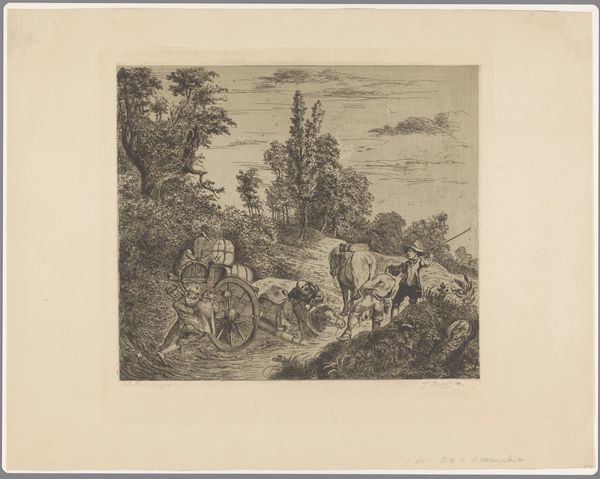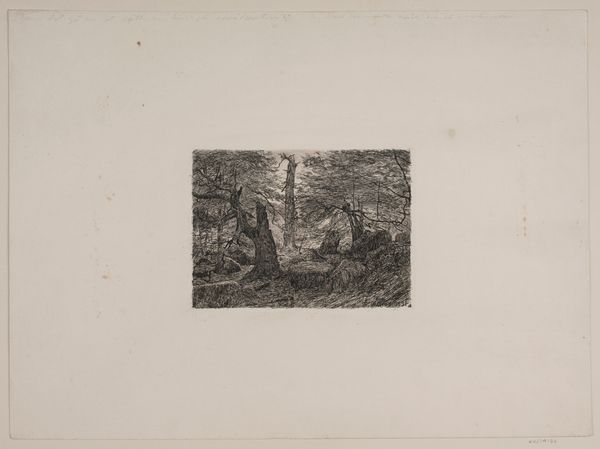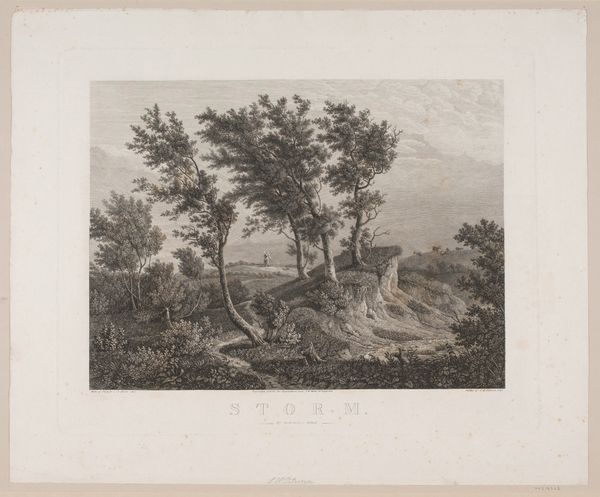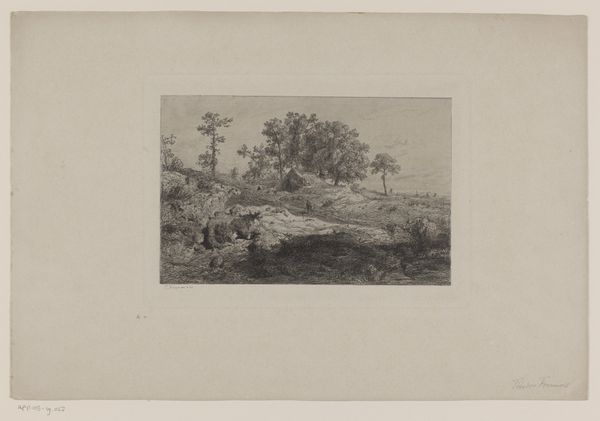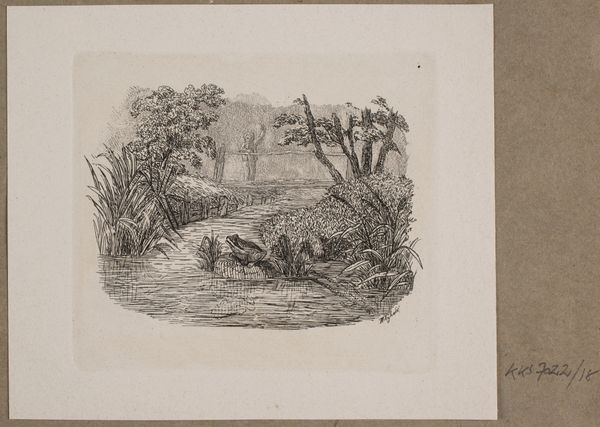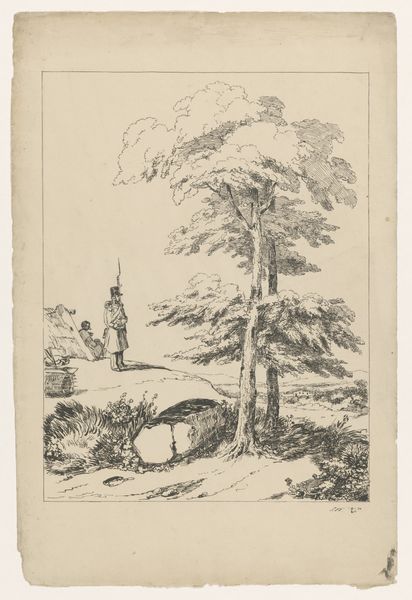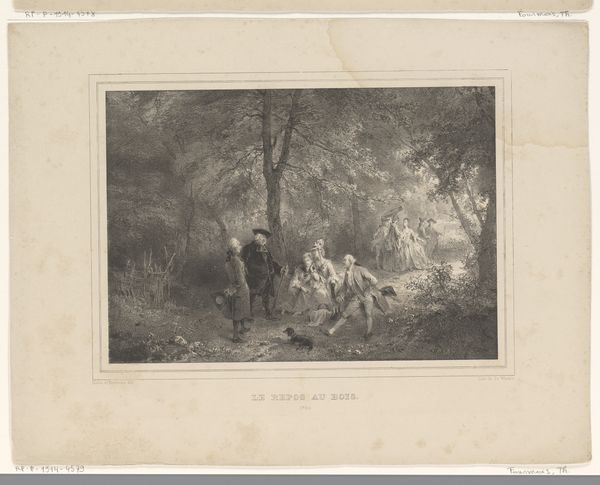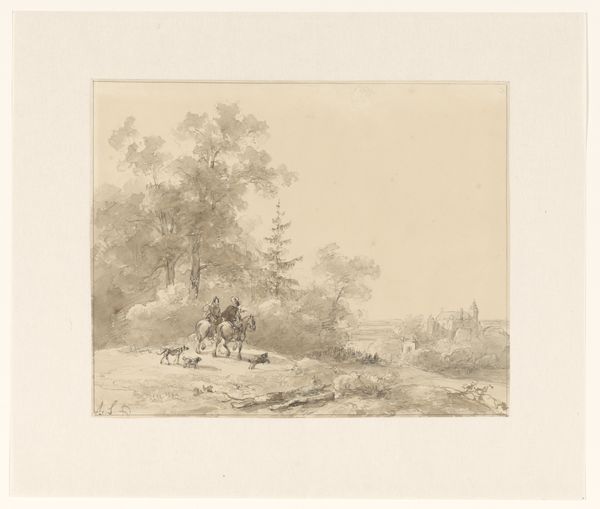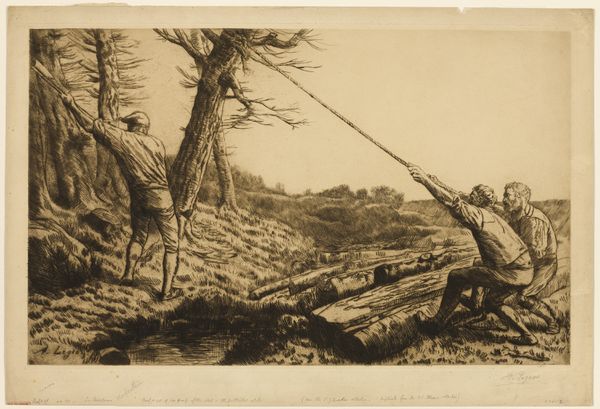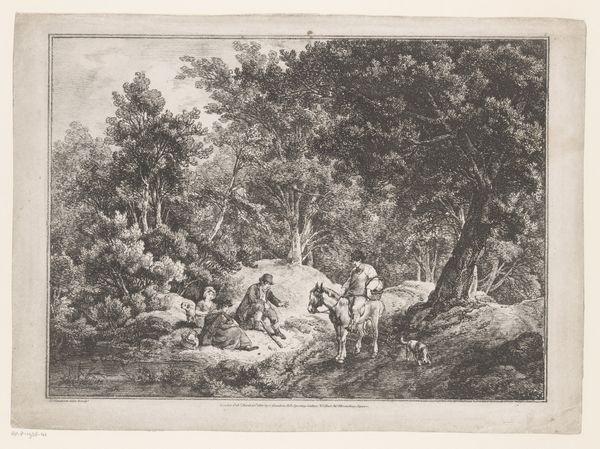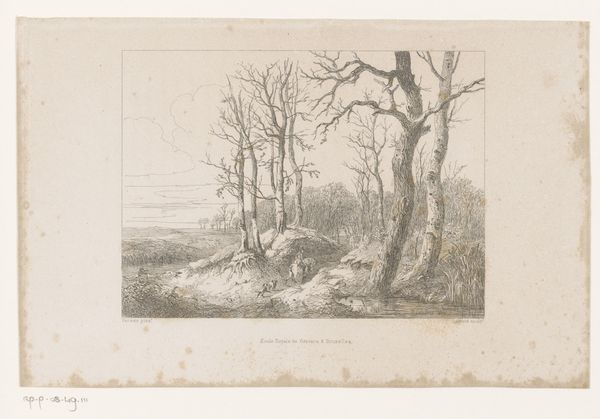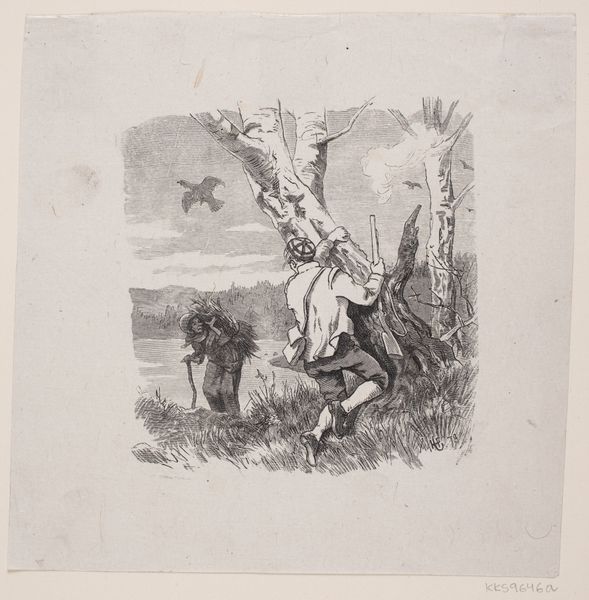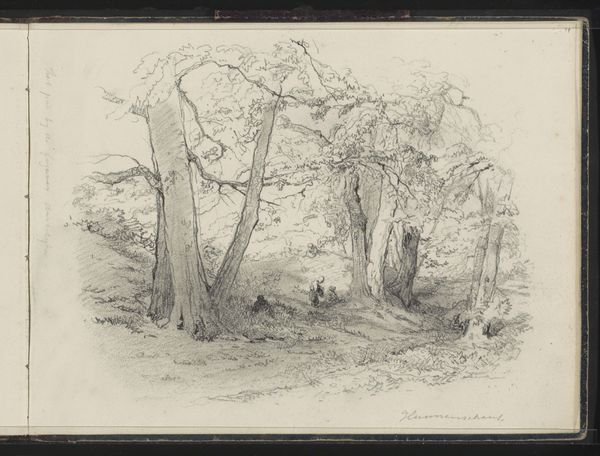
Simplicius in der Waldeinöde, from the series Intermezzi 1870 - 1920
0:00
0:00
drawing, print, etching, ink
#
drawing
#
ink painting
# print
#
etching
#
landscape
#
ink
#
symbolism
Dimensions: Plate: 10 3/8 × 16 3/4 in. (26.3 × 42.6 cm) Sheet: 15 1/4 × 21 9/16 in. (38.7 × 54.8 cm)
Copyright: Public Domain
Max Klinger made this etching, Simplicius in der Waldeinöde, as part of a series called Intermezzi. The printmaking process is interesting here. The artist would have covered a metal plate with a waxy ground, then scratched away the lines of the image. When the plate was dipped in acid, these lines would be etched into the metal. Look closely, and you can see the incredible detail Klinger was able to achieve: every blade of grass, every leaf, every pebble. It’s a world rendered in miniature by the artist's hand, a testament to his skill and patience. But there's more to it than just technical virtuosity. Etchings like this were made to be reproduced and distributed widely. They are a very important part of how art and ideas circulated in the 19th century, an early form of mass media. Klinger’s images invite us to consider the relationship between art, labour, and the burgeoning culture of consumption. Far from the unique object, this work reflects the rise of a new economic order.
Comments
No comments
Be the first to comment and join the conversation on the ultimate creative platform.
